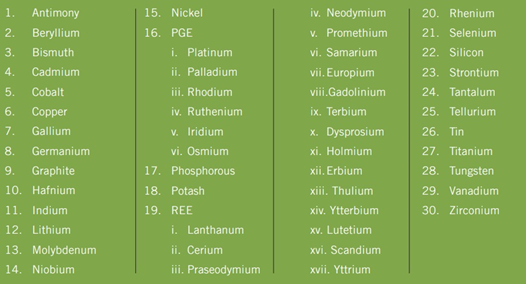Why in News?
A recent NITI Aayog report titled ‘Enhancing Domestic Coking Coal Availability to Reduce the Import of Coking Coal’ outlines measures to reduce import dependency and strengthen domestic production.
What’s in Today’s Article?
- What is Coking Coal?
- Current Challenges in Domestic Production of Coking Coal
- Key Recommendations from the NITI Aayog Report
- What are Critical Minerals?
- Conclusion
What is Coking Coal?
- About:
- Also known as metallurgical coal, it is a naturally occurring sedimentary rock found within the earth’s crust.
- A type of bituminous coal, it typically contains more carbon, less ash, and less moisture than thermal coal, which is used for electricity generation.
- It is a vital raw material for steel production (constituting 42% of steel costs), making it indispensable for infrastructure and industrial growth.
- Application in steel production:
- Coke/ metallurgical coke, which is created through the high-temperature carbonisation of coking coal, plays a crucial role in steelmaking.
- Coke is used in blast furnaces to produce pig iron, serving as both a reducing agent for iron ore and structural support for the furnace charge.
- The largest producers of coking coal in the world: China (676 million tons in 2022-62%), Australia (169 million tons in 2022-15%), Russia (96 million tons in 2022-9%), USA (55 million tons-5%), and Canada (34 million tons-3%).
- Case of India:
- Despite India’s vast reserves, reliance on imports remains at a staggering 85%.
- For example, India’s coking coal imports for the first six months of the current fiscal (April – Sept) were at a six-year-high at 29.6 million tonnes (mt) with shipments from Russia witnessing a substantial rise of over 200% during this period.
Current Challenges in Domestic Production of Coking Coal:
- Inefficiency in coal washeries:
- Public Sector Undertaking (PSU) washeries operate at less than 32% capacity, with washed coal yields of only 35–36%.
- In contrast, private washeries achieve over 75% capacity utilisation and higher yields, showcasing the need for improved efficiency in PSU washeries.
- High import dependency: Integrated Steel Plants (ISPs) imported 58 MT of coking coal at an enormous cost of ₹1.5 lakh crore in FY 2023-24, despite significant domestic reserves.
Key Recommendations from the NITI Aayog Report:
- Recognising coking coal as a critical mineral:
- This will align India with global practices such as in the European Union, which recognises coking coal as critical.
- Designating it as critical can justify policy support to boost domestic production and ensure security for India's steel sector.
- Leveraging domestic reserves:
- India holds 5.13 billion tonnes of prime coking coal and 16.5 billion tonnes of medium-quality reserves.
- These resources should be fully utilised, considering the country’s Net Zero 2070 commitments and economic needs.
- Policy and structural changes:
- Amending the Coal Bearing Areas (CBA) Act, 1957: To ensure that Special Purpose Vehicles (SPVs) under public-private partnership (PPP) arrangements retain operational rights, even after majority ownership shifts to the private sector.
- Facilitating byproduct sales: The Ministry of Coal must enable joint ventures to sell byproducts (middling and tailings) from washeries, benefitting steel plants with lower coking coal expenses.
What are Critical Minerals?
- Meaning:
- A mineral is critical when the risk of supply shortage and associated impact on the economy is (relatively) higher than other raw materials.
- These (such as lithium, graphite, cobalt, titanium, and rare earth elements) form part of multiple strategic value chains, including
- Clean technologies,
- Information and communication technologies (including semiconductors) and
- Advanced manufacturing inputs and materials.
- Identification of 30 critical minerals by the Indian Govt: This was done by the Ministry of Mines on the basis of a 3-stage assessment -
- In the first stage, a total of 69 elements/ minerals were identified on the basis of the strategies of various countries such as Australia, USA, Canada, UK, Japan and South Korea.
- In the second stage, an inter ministerial consultation was carried out with different ministries to identify minerals critical to their sectors.
- In the third stage, taking cognisance of the EU methodology (that considers two major factors - economic importance and supply risk), an empirical formula for evaluating minerals criticality was derived.
-
- Based on this process, a total of 30 minerals were found to be most critical for India:

Conclusion: Boosting domestic coking coal production is critical for securing India’s energy and industrial future.









